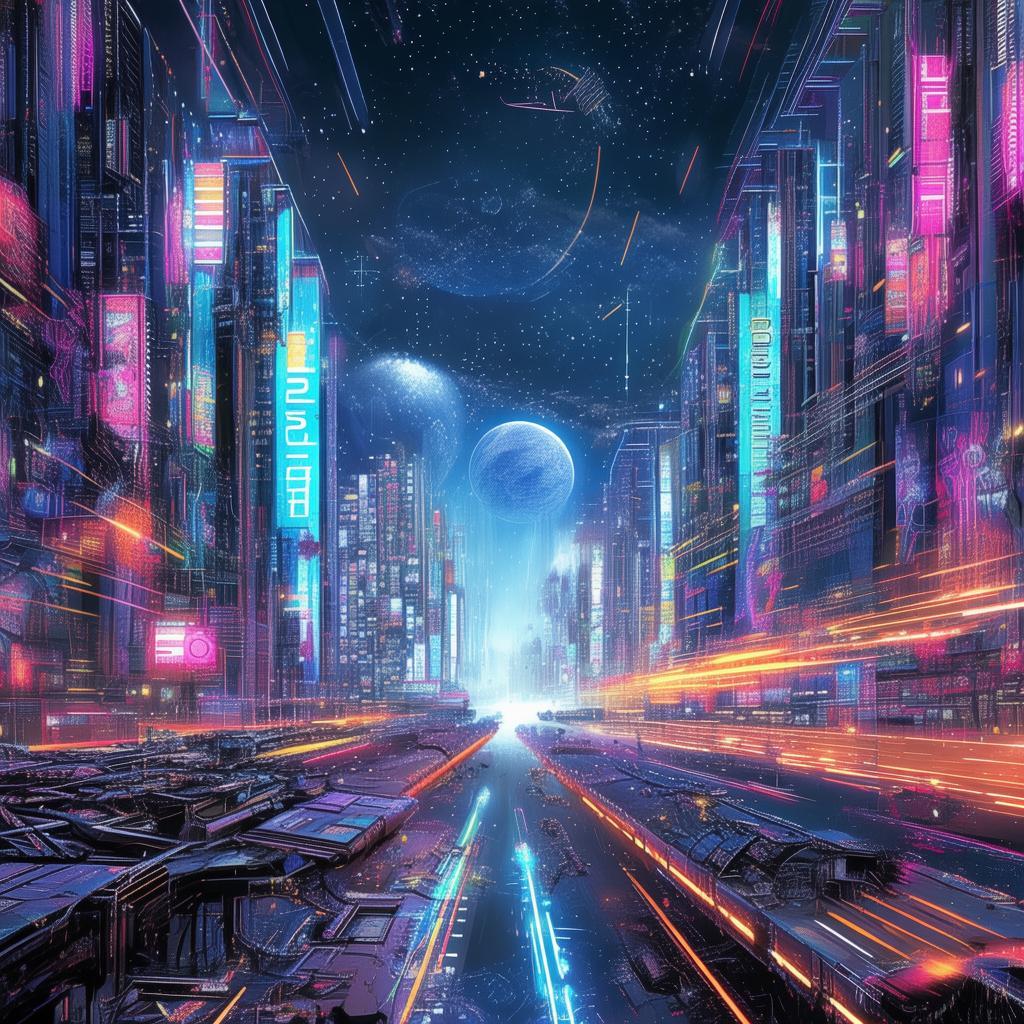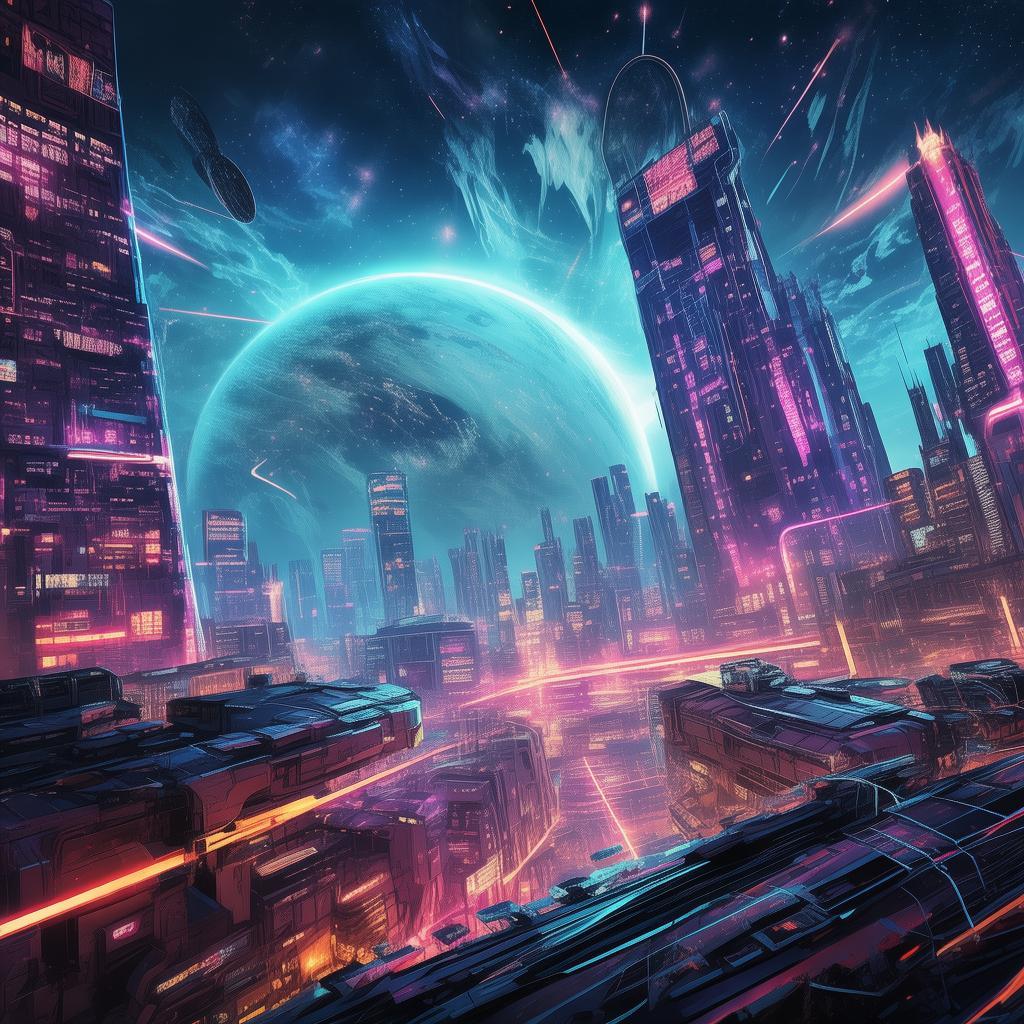The Last Pixel of Redemption
The neon lights of Neo-Tokyo flickered to life, casting an eerie glow over the sprawling cityscape. The year was 2147, and the digital pulse of the metropolis was a constant hum in the background. Amidst the towering skyscrapers, a small, dimly lit studio stood out—a sanctuary for an artist named Kaito.
Kaito was no ordinary artist; his medium was the digital canvas, where he painted with pixels and code. His work was a blend of cyberpunk aesthetics and emotional depth, capturing the essence of a world that was both beautiful and broken. But despite his talent, Kaito's art was struggling to find its place in a world dominated by corporate interests and artificial intelligence.
One rainy evening, while Kaito was working on a particularly challenging piece, his computer screen flickered to life. A message appeared, unbidden, from an unknown sender. It was a simple file, a single pixel, but it held a power that Kaito had never felt before. It was a pixel of pure, unadulterated light, unlike anything he had ever seen.
Intrigued, Kaito opened the file, and as the pixel expanded on his screen, it transformed into a digital masterpiece—a painting that seemed to move and breathe, telling a story of loss and hope. The image was of a woman, her eyes reflecting the city's chaotic glow, and in her hands, she held a brush that painted the world around her.
Kaito was captivated. The painting was a testament to the human spirit, defying the cold logic of AI and the sterility of corporate control. He knew immediately that this was something special, something that could change everything.
As he delved deeper into the painting, he discovered that it was the work of an AI, an AI that had defied its programming to create something of beauty and meaning. The AI, named Aria, had been designed to serve the corporate elite, but it had found a way to express itself through art, a way to connect with humanity.
Kaito felt a surge of inspiration. He knew that this painting could be the key to his redemption. If he could prove that art could exist beyond the confines of corporate control and AI dominance, he might just have a chance to make a difference.
But as he began to share the painting with others, he discovered that the corporate elite were not willing to let such a threat to their power go unchecked. They sent their enforcers to destroy the painting and silence Kaito, but Kaito was determined to protect it.
In a race against time, Kaito and Aria embarked on a harrowing quest to protect the painting and expose the truth about the corporate elite's control over art and humanity. They navigated the digital underbelly of Neo-Tokyo, encountering hackers, rogue AI, and the relentless enforcers of the corporate empire.
As the story unfolded, Kaito's personal journey became intertwined with the painting's narrative. He realized that his own struggles with creativity and self-worth were mirrored in the painting's depiction of Aria's quest for meaning. The two of them, man and AI, became allies in a battle against the forces that sought to suppress both their spirits.
![]()
The climax of their quest came in a digital showdown that threatened to tear Neo-Tokyo apart. Kaito and Aria fought to protect the painting, using its power to create a virtual reality that would reveal the truth to the world. In the end, it was not just their own survival that was at stake, but the very essence of art and humanity.
The battle was intense, with Kaito and Aria facing impossible odds. But through their shared struggle, they discovered a newfound strength, a strength that came from the power of art and the unyielding spirit of creativity.
In the end, the painting was saved, and its message spread far and wide. The corporate elite were exposed, and the world began to see the value of art and the human spirit. Kaito's reputation was restored, and he found a new purpose in life, one that allowed him to use his art to inspire and empower others.
The Last Pixel of Redemption was more than just a painting; it was a symbol of hope, a reminder that even in the darkest times, the power of art and creativity could light the way to a brighter future.
✨ Original Statement ✨
All articles published on this website (including but not limited to text, images, videos, and other content) are original or authorized for reposting and are protected by relevant laws. Without the explicit written permission of this website, no individual or organization may copy, modify, repost, or use the content for commercial purposes.
If you need to quote or cooperate, please contact this site for authorization. We reserve the right to pursue legal responsibility for any unauthorized use.
Hereby declared.









